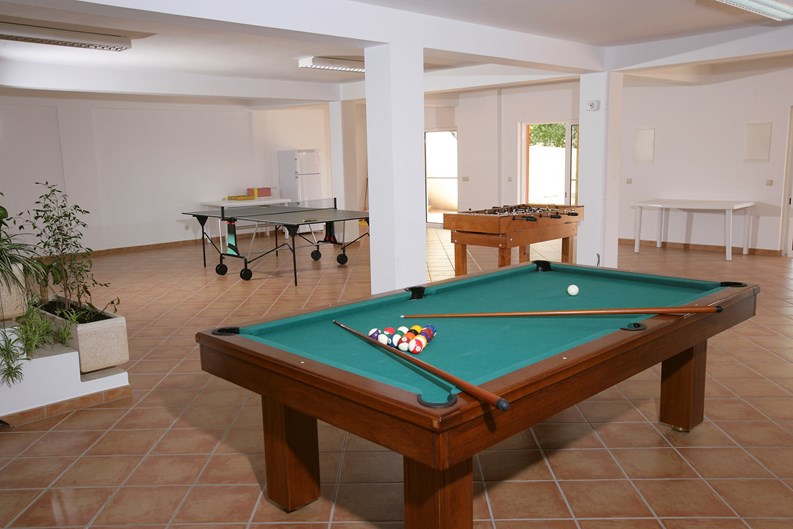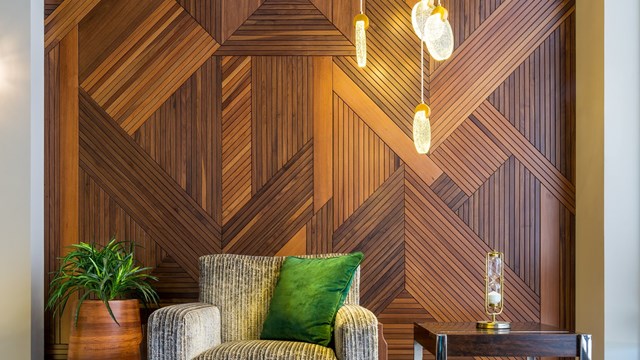In the past, developers would throw a few chairs and tables into a large room and call it a 'common room' or a 'recreation space' and leave it at that. Today, however, there's more to designing, maintaining and upgrading a successful common area than just sweeping the floor and making sure the Nespresso machine is stocked with coffee pods. Over time, bare-bones meeting rooms with a woebegone ping-pong table and a third-hand TV have given way to next-level common spaces that are attractions in their own right.
In just about every major metropolitan area—including parts of the Garden State— luxury condominium developers are listening to buyers, and building common areas into their projects from the get-go that include fitness facilities, business centers, party rooms and movie theaters for residents to enjoy.
“All of the newer buildings have lounges and outdoor spaces,” says Dan Wurtzel, president of the property management department for FirstService Residential, which handles properties throughout the tri-state area. “They have some type of fitness center and health club. We have a building that has a bowling alley. Some of these buildings have dog washing stations where you can give your dog a bath or shower if you don’t want to do it in your apartment. Residents have responded really well to those.”
“I’m seeing a lot of new, fun outdoor spaces, and rooftop lounges,” says Todd Dumaresq, a project manager for Toll Brothers City Living, a luxury development firm that oversees a number of luxury buildings in Hoboken and other New Jersey communities. Maxwell Place in Hoboken, for example, features over 30 rooftop terraces. Amenities also include lounges, fitness centers, a children’s playroom, a park and dozens of courtyards. “Our space 1100 Maxwell has a rooftop pool on the fifth floor, private rooftop terraces and a hot tub and Jacuzzi,” Dumaresq says.
Design Elements
According to the pros, common areas in multifamily buildings, particularly in denser urban areas where individual apartments may not exactly be spacious, are often used as an extension of residents' homes. “Especially in buildings where the units are typically smaller spaces, residents will use the common areas like a living room,” says one management pro. Newly-built condo buildings might include common amenities such as theaters or screening lounges, billiard rooms and wine cellars. “Today owners are looking for social space, so the lounge space now has work tables where technology has been integrated,” says another designer. “Before, the lounge space had been designed solely for watching TV, but now we provide work tables with plug-ins and comfortable chairs.”
Successful common areas include specific design elements that make the room aesthetically-pleasing and functional, not only for current residents but in a way that is attractive to new buyers as well. “A common area is successful if it is warm and welcoming and you feel like you’re home before you even get into your home,” says Gia Milazzo-Smith, founder of Designs by Gia Interior Designs, based in Massachusetts. “They should have warm, inviting colors that are soothing and uncluttered furnishings that can be used by everyone.”
Common Room Usage
One thing that several of the professionals we spoke with for this article expressed surprise at just how heavily today's multifamily common areas are used. This may be due in part to the increase in people working from home, and using a WiFi-enabled common meeting room or lounge area as an occasional office space, setting up their laptop to do some work in relative quiet.
Whatever it's a formal purpose, designers say that a successful common area starts from the outside in. “Developers rely on marketing companies and consultants to guide them in the direction of amenities that will best suit the building,” says Wurtzel. “You also have to realize that buildings that are in neighborhoods or areas that are more non-residential, or they are some sort of pioneers in that area, in order to attract purchasers they need a high level of amenities.” In more established neighborhoods, Wurtzel continues, “You put up a condominium building, and you don’t necessarily have to put in lots of amenities. You’ll have to put in some, but because you are in an established residential neighborhood that’s the draw. The neighborhood is going to bring people in.”
Next, it’s important to get to know your residents and what they want in their common room. Surveys are a good tool in determining what new features will help to keep residents interested in amenities that are already there. A gym is a good example—surveys can reveal what types of new equipment users want, especially since many exercise rooms regularly replace their equipment every few years. “For us specifically we really talk to both prospects and homeowners within the community to find out what they like and don’t like,” says Dumaresq. “We ask them what they use and what they don’t use. I think that is probably the most efficient way.” Boards themselves can also create ideas or plans and then present them at town hall meetings, where owners can come and voice their opinions.
In luxury properties, common areas generally reflect the status aspirations and entertainment needs of residents by offering high-end finishes and impressive views from top-floor and rooftop locations. “These design solutions allow residents to share the dramatic features of their residences when they host social functions,” he says.
If, say, a building has residents that are more families with children, parents would probably enjoy having a common area that is a children’s play area located close or next to the laundry room. In properties where there is a mix of single residents and families, a gym could provide a section for adults, but also a section with windows looking into the children’s playroom.
Designer Robin Wilson, founder and CEO of Robin Wilson Home in New York City, and author of the book Clean Design: Wellness for Your Lifestyle, says that common elements should include comfortable/durable/easily cleaned seating, non-slip flooring and layers of lighting (sconces, overhead and lamps or task lighting). “Lounges, media and play rooms should include televisions, WiFi routers, seating for all ages, easily cleaned seating and flooring, storage for items with locks if appropriate for remotes, coffee supplies and toy bins. Lobbies should feature a simple layout with seating that can be rearranged, with warm, welcoming lighting and easily-cleaned flooring options.”
Successful design is all about flexibility too. “Put a pool table in the room, but make sure there are flexible seating arrangements so they can make changes depending on what kind of event they are holding,” says Milazzo-Smith.
Fun in, Sound Out
In dense urban areas where housing has to be vertical because of space constraints, noise—both from the street and from neighbors—is always an issue. To address that in common areas, many designers and engineers are adding acoustical properties to common rooms so they aren’t as noisy. “We have used cork floors, which mitigate both the echo from conversations as well as the transfer of vibrations to spaces located below the floors,” says Richard J. DeMarco, a Manhattan-based architect. “New ceiling systems, such as cloud ceilings and spray-on acoustical finishes, are also becoming increasingly popular.” Good acoustic design is very important as well. The pros agree that it's imperative to select proper finishes, so as to not wind up with an acoustically 'bright' space that creates uncomfortable levels of sound reverberation during social gatherings.
Energy efficiency is another important aspect of new materials and systems. LED lighting fixtures, which are highly efficient and reduce maintenance costs, are currently very popular—and getting more so as their cost falls and the light they emit becomes warmer and more flattering.
Outdoor common areas, particularly those that offer views from rooftops, continue to be highly valued and desired by residents in urban environments, such as New York, Chicago and Miami. It's not uncommon for them, DeMarco says, to feature cooking facilities, warming kitchens, wet bars, grills and fireplaces, along with appropriate seating sections, and shaded areas with trellises.
Common Room Blunders
Unfortunately, not all designers and developers know what it takes to make a common room that will be frequently used by its residents. “Design blunders and errors are typically related to misunderstanding the lifestyles of residents, layouts that impede traffic patterns and desired usage, and ineffective acoustical engineering,” says DeMarco. “One of the most frequent design errors is either a lack of, or insufficient, warm-up kitchens. This makes it hard for residents to properly organize catered events.”
Another cardinal common area sin is lack of light. Dark and dingy does not a popular common room make. If you have a common room that no one is using, it might be worth considering the light quality in the space, and whether proper use is being made of the windows.
“I would venture to say this is an area of opportunity for developers. In many newer communities we see the same type of unused/low-valued amenity spaces over and over,” says Jean Marie Potter, founder and CEO of NFC Amenity Management in Asbury Park.
For example, “Golf simulators are under-utilized—and game rooms, ping pong tables and billiards really date a space. I also think that with the evolution of home wine chillers, the community wine cellar never caught on; wine rooms have waned in popularity,” she says. “Developers, historically, have built amenity spaces that look terrific in the sales process but may not function well for residents. The developer wants to sell units. The residents want to use a space and enjoy it. The goals of each group are different.”
Upgrade Options
If your building’s common rooms leave a little to be desired, the board should consider working with designers and architects who can provide adequate solutions. Generally, a design pro will meet with the board to discuss budgets, residents' needs, and the limitations of the space itself. The designer and his or her team will then formulate a set of possible options for the board to review and consider.
Designers approaching a new project or a renovation first perform a diligent analysis of the demographics in the building (who lives there?), usage patterns, efficiencies, inefficiencies, and the desired functions of common areas. “The feedback from the HOA, individual residents, and building management is crucial in the pre-design phase,” DeMarco notes.
Turning to the experts for advice is vital during the design process. “Property managers know a good job when they see it, but don’t know how they get there,” say one design pro. “The higher the quality of people they employ to design the room, the better it is for them. Engineers are going to care for the materials and put together a bid package and ask what the objectives are. The condo boards often have no idea how much things cost, so we put together a reserve study and price out all of the items that should be included. It helps them to say yes, or we need to wait a year and go back and raise the money.”
No matter the size of your community or its budget, when it comes to creating a successful common room, it's all about how you create an intimate space in a larger-scale venue.
Lisa Iannucci is a freelance writer and a frequent contributor to The New Jersey Cooperator.










Leave a Comment